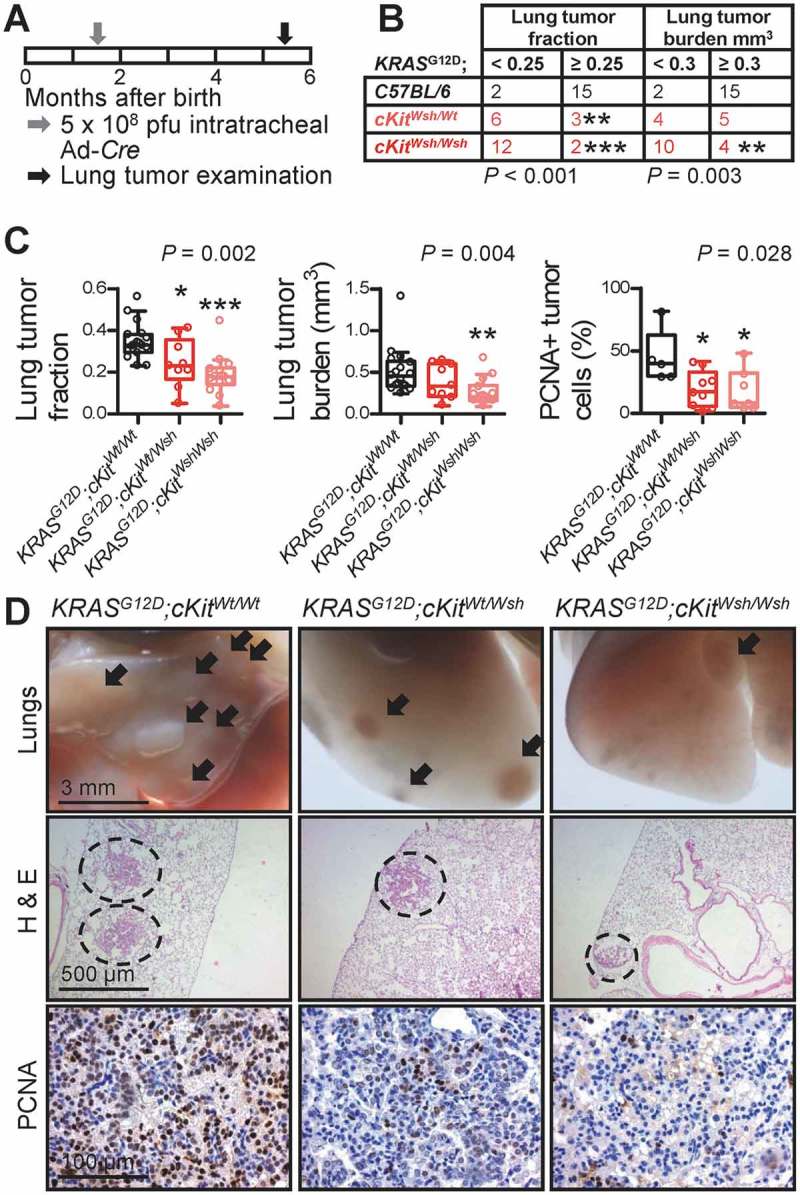Figure 4.

Mast cell deficiency protects mice from KRASG12D-induced lung adenocarcinoma of the alveoli.
KRAS,G12D KRAS;G12DcKitWsh/Wt, and KRAS;G12DcKitWsh/Wsh mice (C57BL/6 background) received 5 × 108 intratracheal plaque-forming units (pfu) Ad-Cre and were killed after four months (n = 17, 9, and 14, respectively). A Schematic time-course of the experiment with boxes representing one month. B Frequency distribution of relative lung tumor fraction and absolute lung tumor volume (burden) with n and χ2 P values. ** and ***: P< 0.01 and P< 0.001, respectively, for comparisons with KRASG12D controls by Fischer’s exact test. C Data summary of relative lung tumor fraction and absolute lung tumor volume (burden) per lung, as well as percentage of proliferating cell nuclear antigen (PCNA)+ tumor cells with Tukey’s whiskers (boxes: interquartile range; bars: 50% extreme quartiles), raw data points (dots), and Kruskal–Wallis ANOVA P values. *, **, and ***: P< 0.05, P< 0.01, and P< 0.001, respectively, for comparison with KRASG12D controls by Dunn’s post-tests. Only statistically significant differences are indicated. D Representative images of gross lungs and hematoxylin/eosin (H & E)- and PCNA-stained lung sections. Arrows and dashed lines denote lung adenocarcinomas.
